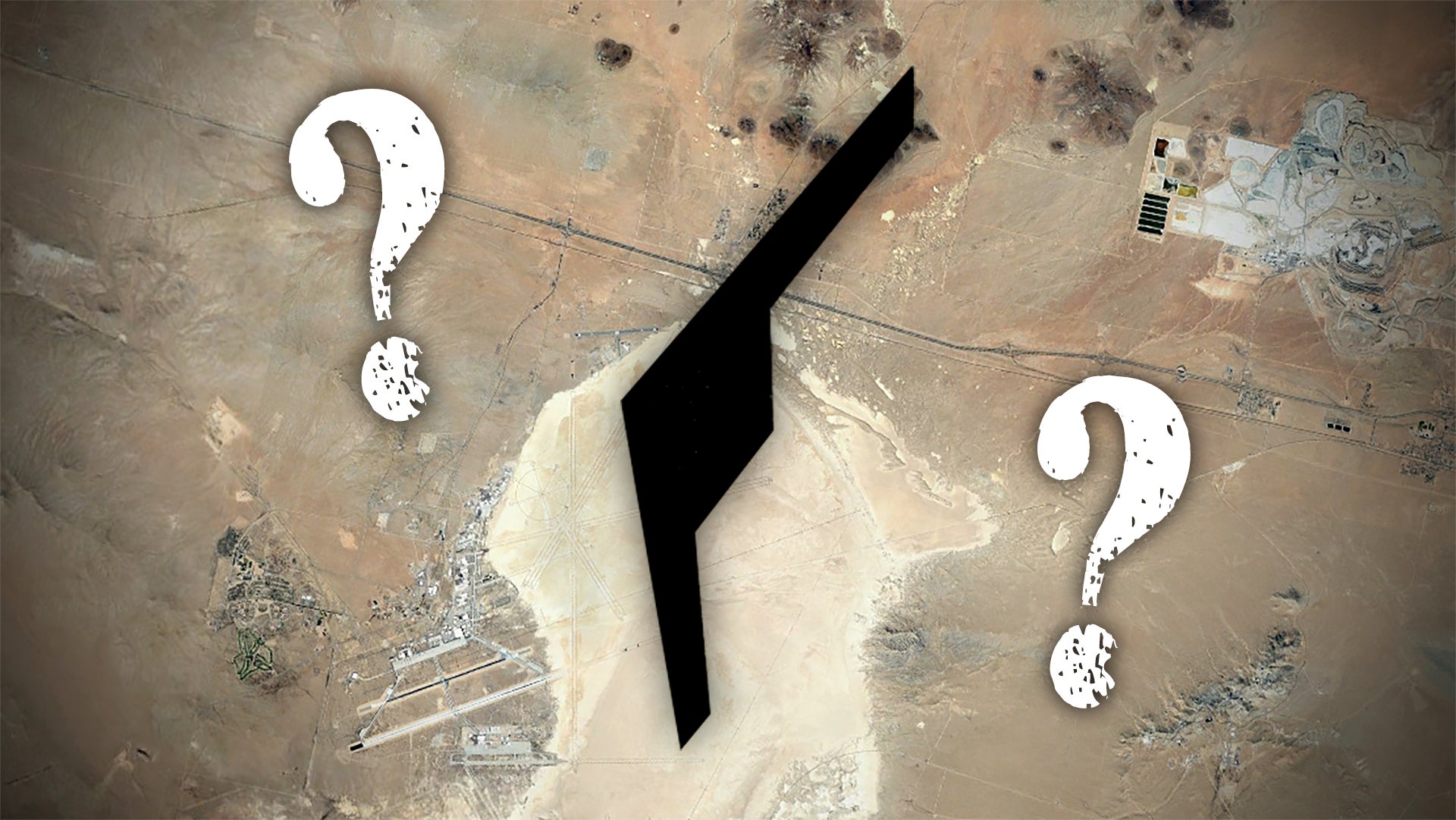A photo taken in early October 2020 of what appears to be a high-altitude, long-endurance (HALE), low observable (stealthy) unmanned aircraft flying high over the Mojave Desert north of Edwards Air Force Base in California emerged on Instagram over the weekend. The source had taken other images in similar locations that were not of any unique interest and the photo itself looks legitimate upon examination, but does it actually provide our first glimpse of the Air Force’s secret high-flying drone, the so-called RQ-180?
The answer is maybe.
It was flying in more or less a logical place for that aircraft to be, especially as we understand that at least some RQ-180 operations have migrated to Edwards, but the fact that it was doing so during daytime is odd, to say the least.
Its planform is what we would expect from a HALE low-observable drone, and is very similar to that of the B-21 Raider, another Northrop Grumman product like RQ-180 and a stealth aircraft intended to cruise at high altitudes. You can read all about how the B-21 got this unique high-flying configuration in this past War Zone feature.
Even the aircraft’s white color would make some sense in the testing environment, but also because unmanned penetrating UAVs use white/cream/light pastel colors to better hide at altitude during the daytime. Still, it isn’t clear if the RQ-180 would wear a dark or light scheme, as it would be able to persist for very long periods, which would stretch from day into night and back again.
Regardless, there is one major issue. Upon initial examination of the photo, I said to myself “oh, the Polecat’s back in the air!” What I am referring to is Lockheed Skunk Works’ P-175 Polecat experimental flying-wing drone that was flown in 2005 as a technology demonstrator. It was housed adjacent to Yucca Dry Lake in the Department of Energy’s section of the Nevada Test and Training Range (NTTR) during its trials. The aircraft eventually malfunctioned and crashed and that was the end of the somewhat mysterious program, or at least that’s what we were told.
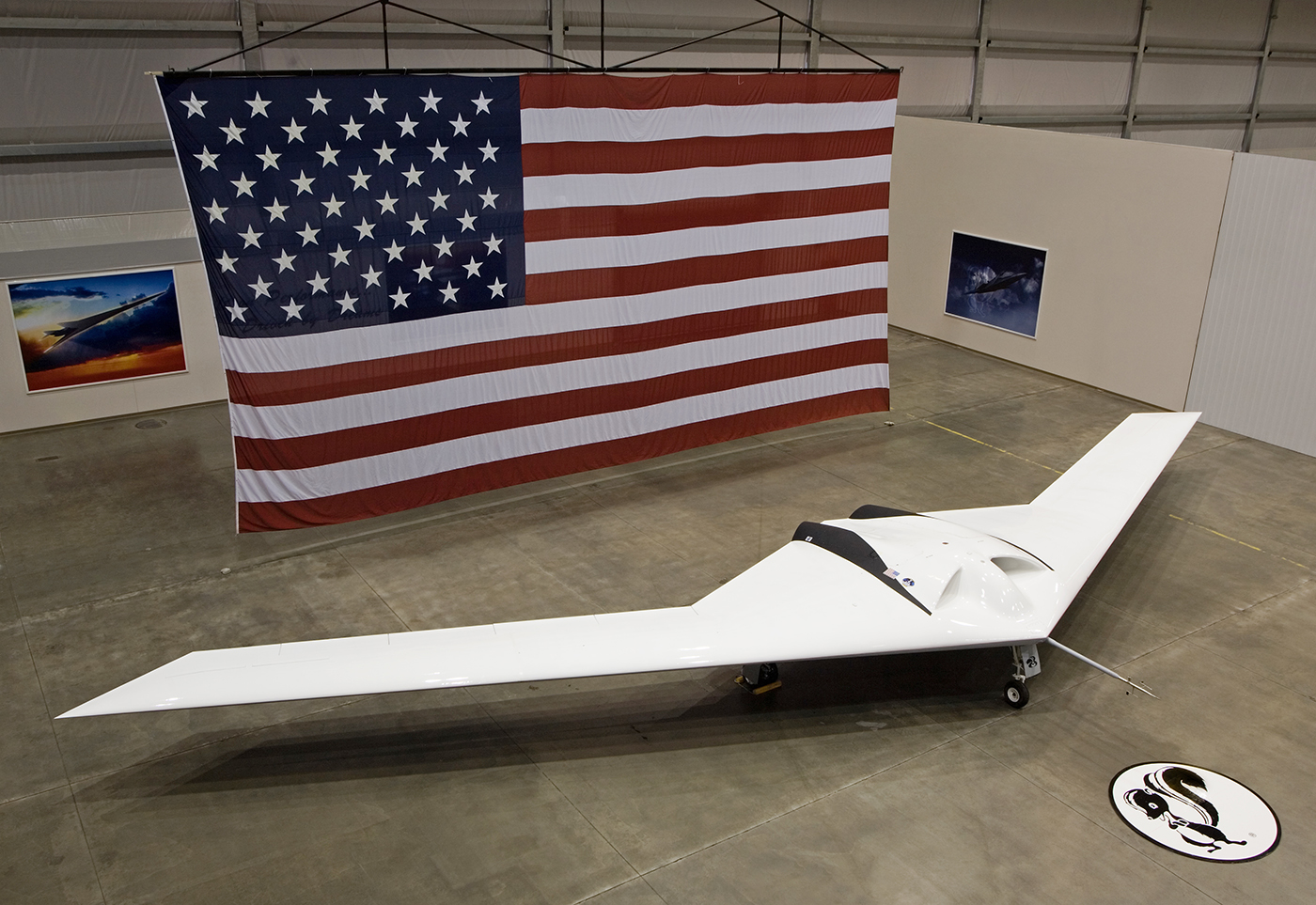
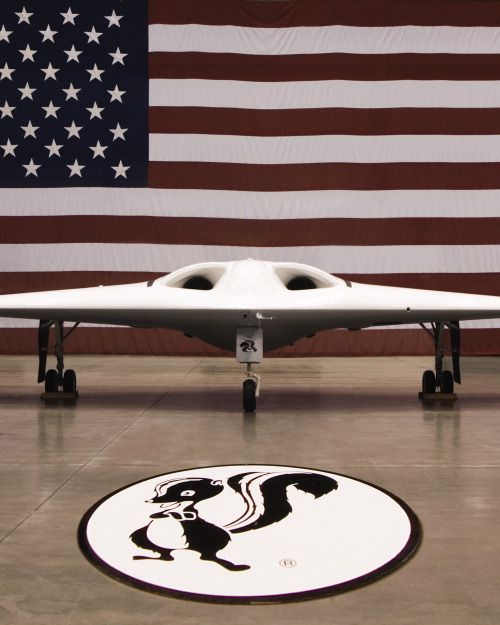

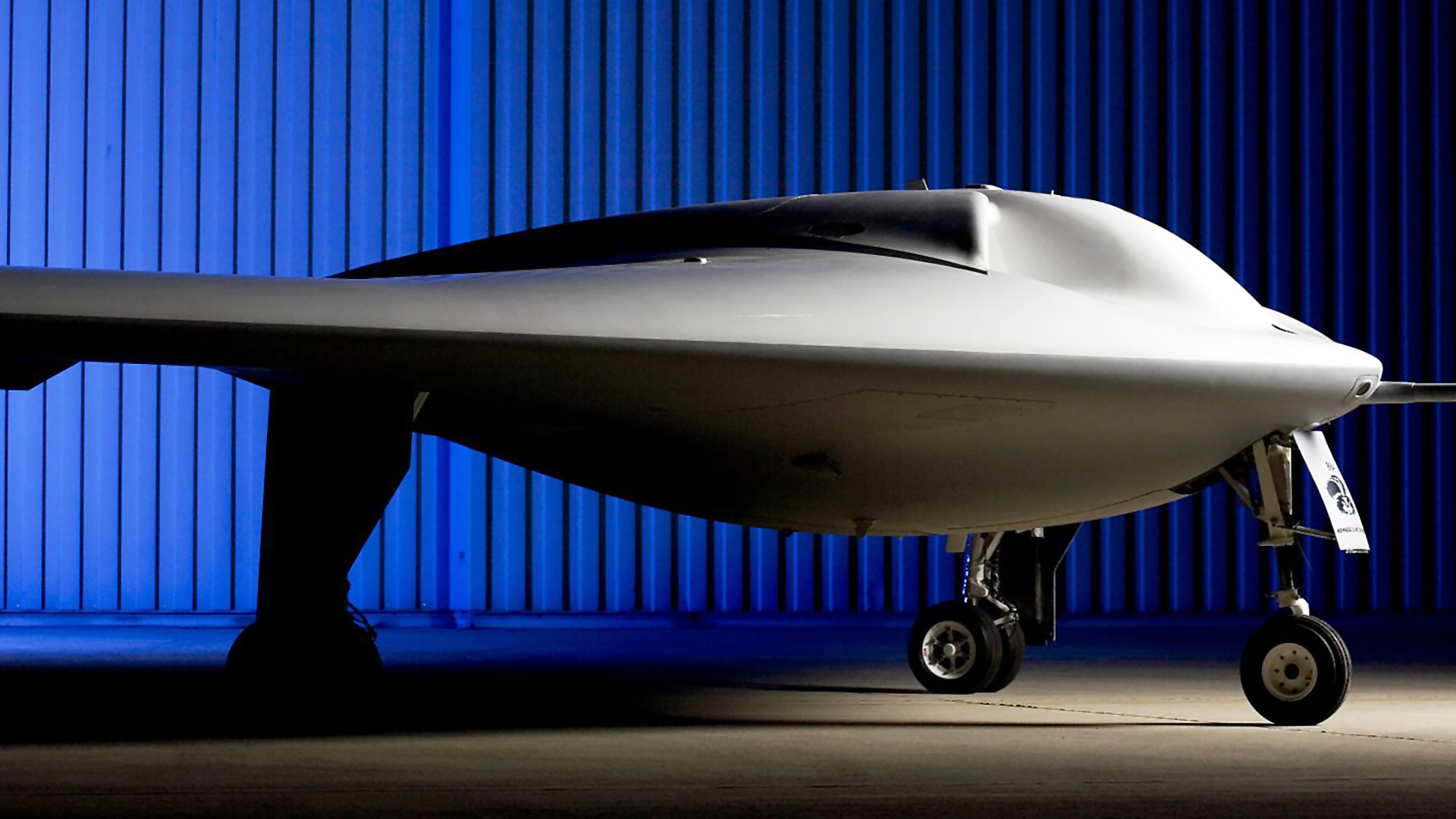
Yet we know that other Polecat fuselages were built—one of the program’s goals was pushing advanced composite structure manufacturing and design to the limits of technology at the time. In fact, one laid shrink-wrapped in the backlot of the Skunk Works sprawling complex at Plant 42 in Palmdale for years—that is until a few years ago.
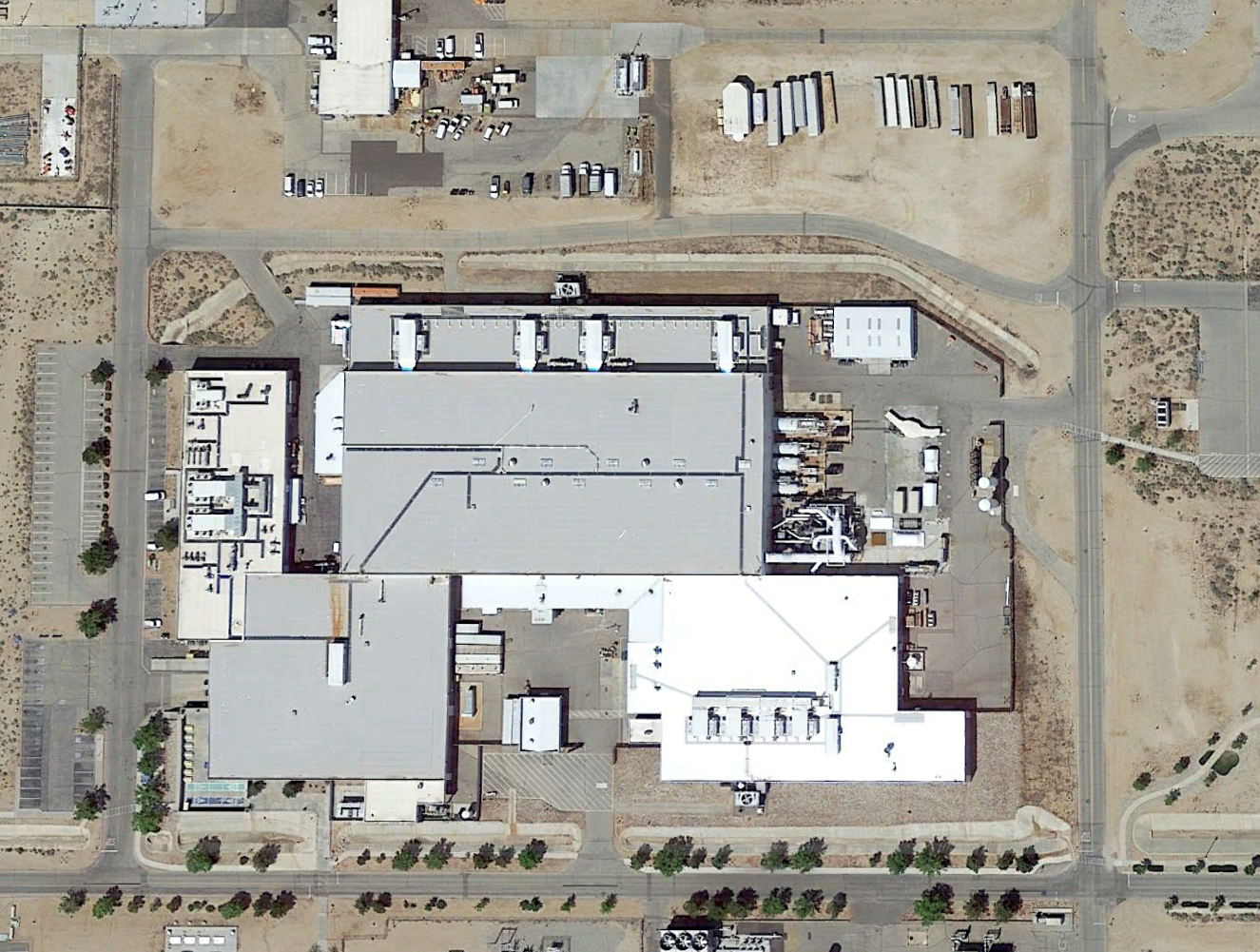
In fact, the aircraft seen is in the image is a dead ringer for Polecat in every way, including its twin centrally-mounted engines, slender, clipped wings, and bulbous ventral shape. Polecat was also the exact same color and flying it in the middle of the day wouldn’t be a huge issue as it is a declassified program.
Why would Lockheed revive Polecat? Well, for similar reasons that the RQ-180 exists, and more. In fact, we posited it was a near-perfect platform for the airborne laser trials that the Missile Defense Agency was planning just a couple of years ago. You can read all about this initiative and the P-175 Polecat in this past piece of ours. A revived and upgraded Polecat could work as a testbed for all types of stealthy flying-wing-related technologies, including some of the components being integrated into the B-21.
At the same time, there are only so many ways to skin the proverbial cat when it comes to the best configurations for a high-flying, stealthy, subsonic, flying-wing aircraft. As mentioned earlier, Polecat has much in common with the shape of the B-21 Raider, at least based on the renderings we have seen of the bomber, which is a glowing endorsement of just how far head the Skunk Works was with the Polecat’s basic shape. It is very possible the RQ-180 shares a very similar shape, as well. In fact, the B-21’s configuration, once again a Northrop Grumman product like the RQ-180, would be evidence of this and the company has released a number of high-flying notional UAV designs that are very similar in appearance going back nearly two decades.

So, what do I think we are seeing here. It’s unclear, but I would not be surprised if this is indeed our first glimpse of the RQ-180. At the same time, the possibility that this could be Polecat reborn, or a derivative of it, is also valid, especially seeing as it was flying during the day and a dead-ringer to that previously declassified platform.
In fact, both could be true. While only one could be seen in the image, both types could be flying today and this may have complicated some of the information we know about the RQ-180. For instance, Guy Norris over at Aviation Week says the RQ-180 has a new nickname:
The unusual light color of the vehicle is also believed to be a link to the RQ-180. A local nickname around Edwards AFB for the RQ-180 is the “Great White Bat”–or sometimes “Shikaka”–a fictional sacred white bat from the 1995 movie Ace Venture 2 [sic; Ace Ventura 2].
The reality is that it could
be the Polecat and not the RQ-180 that is operating in the open at the base from time to time, while the RQ-180 operates more in the shadows. We just don’t know. It is all but certain the RQ-180 exists though, while the Polecat flying again is more speculative, at least at this time.
Either way, this is exciting stuff and yet another indicator of a capability that will increasingly become a central fixture of the future of high-end air combat—high-altitude, long-endurance, penetrating unmanned aircraft—is moving forward.
Our entire report on the RQ-180, which has been a year in the making, will address all this and so much more in the very near future. So standby for that. In the meantime, keep looking up!
Contact the author: Tyler@thedrive.com
